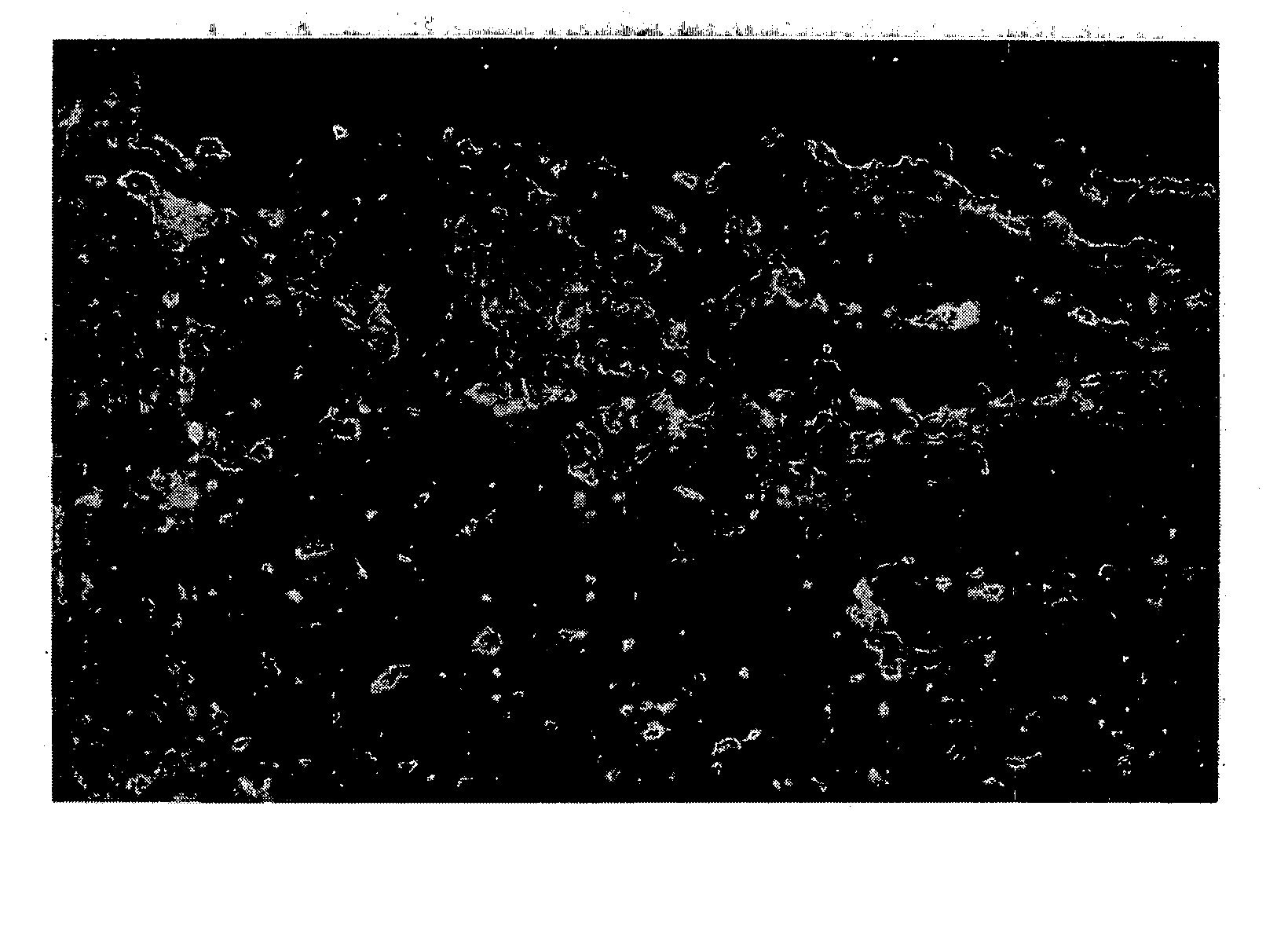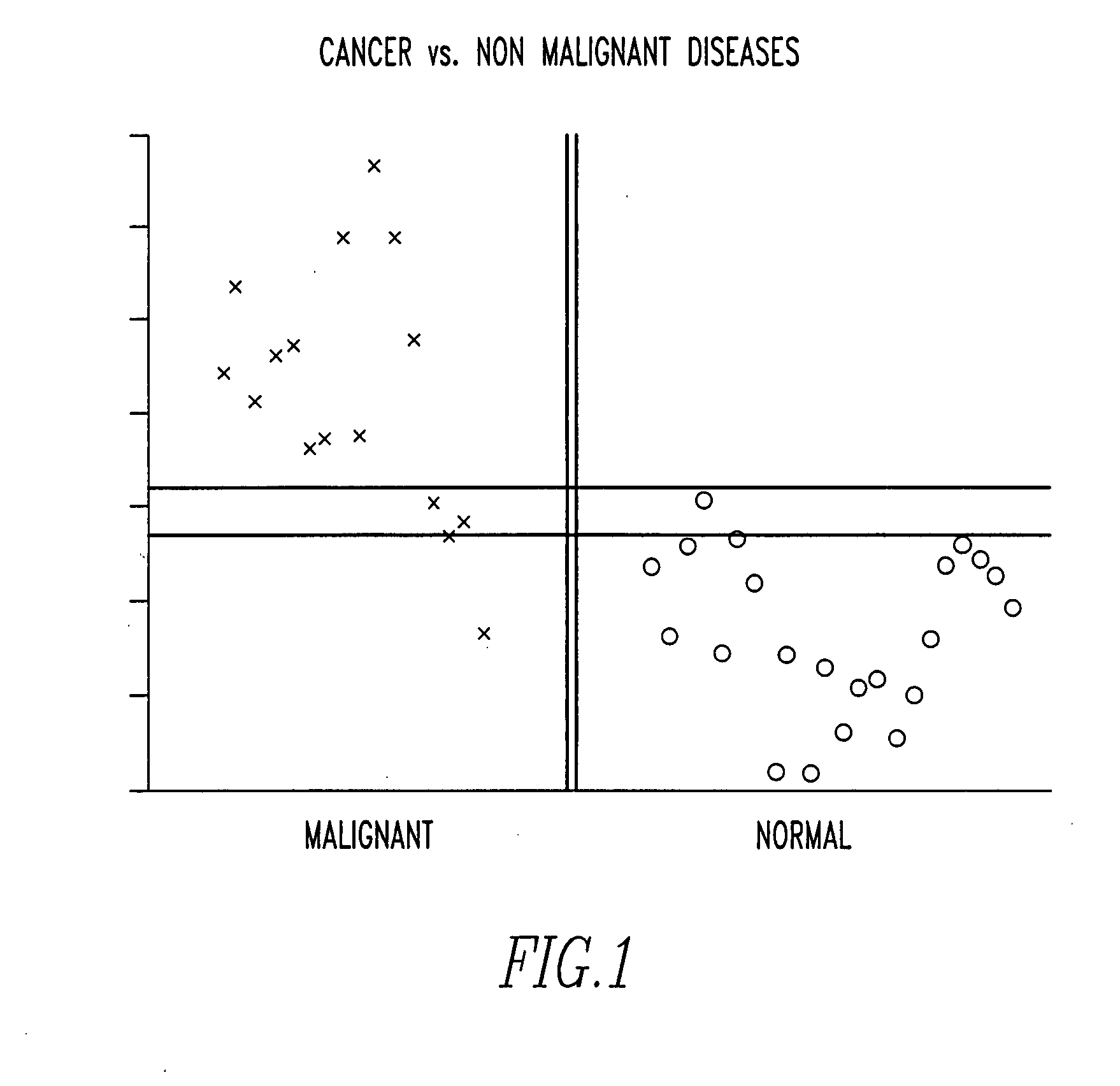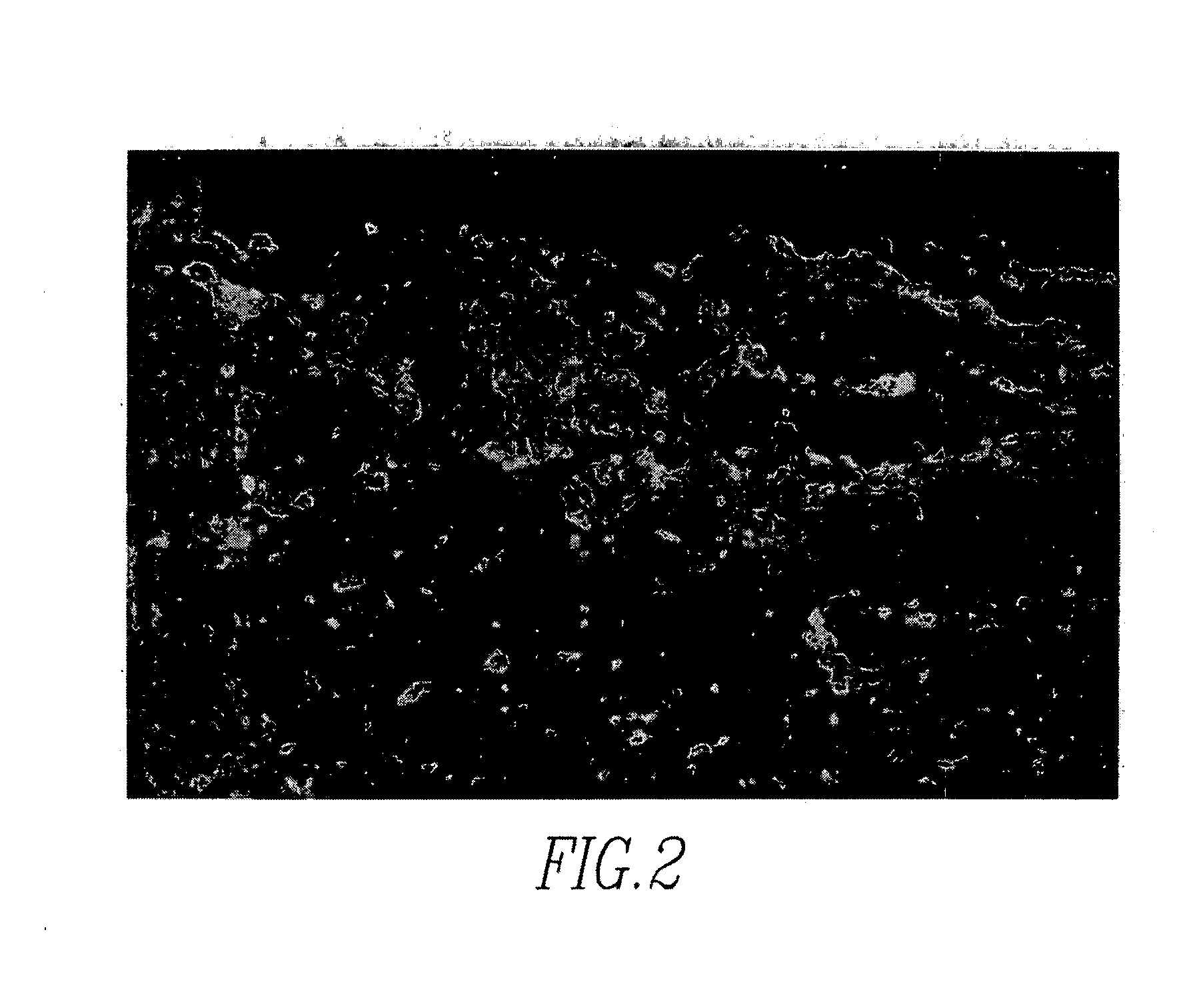Detection and treatment of cancer
- Summary
- Abstract
- Description
- Claims
- Application Information
AI Technical Summary
Benefits of technology
Problems solved by technology
Method used
Image
Examples
example # 1
EXAMPLE #1
[0053] In one example, 22 serum samples from non-cancerous patients and 17 samples from cancerous patients were tested by an enzyme immuno-assay (EIA) for their AFP receptor concentration. The technique used was as follows: EIA 96 well plates were coated from 1 hour to overnight with serum samples from the above described groups diluted 1 / 16384 in phosphate buffered saline (PBS) (0.05 M PO4, 0.15 M NaCl, pH 7.5). Some wells were coated in a similar manner with the pleural effusion from a patient with lung metastases of a mammary carcinoma at a 1 / 256 dilution. This material, name coded P89 was used as a standard because of the large quantities available. This allowed P89 to be used as the same standard for comparing all the samples against all others in all the experiments. After 3 washes with PBS, non-specific binding sites were blocked with 1% ovalbumin or gelatin in PBS for 1 hour. After 3 washes, 100 ul of a 1 / 200 dilution in 1% ovalbumin in PBS of a monoclonal antib
example # 2
EXAMPLE #2
[0058] In another embodiment, an adequate plastic or glass substrate (EIA plates or test tubes) is coated with monoclonal antibodies (Mab) against the AFP receptor at a suitable concentration. After washing out the excess of Mab., the substrate is blocked with an irrelevant protein or amino acid mixture to prevent non-specific binding and a suitable sample dilution of a patient bodily fluid (serum, saliva, urine, etc.) is incubated with the coated substrate for a suitable period of time. After washing to remove the unbound sample material, a second antibody, of the polyclonal type is added (polyclonal antibodies are produced by immunizing an animal and using its serum as the antibody source for the reaction as opposed to Mabs which are produced by individual clones of immortalized spleen cells in culture or grafted into a suitable host). This antibody can be conjugated to a suitable marker or enzyme to develop a colour or otherwise detectable reaction or the assay might proce
example # 3
EXAMPLE #3
[0059] Same as Example #2 but using two different polyclonal antibodies instead of a monoclonal and an antibody for the 1st and 2nd antibodies, respectively.
PUM
| Property | Measurement | Unit |
|---|---|---|
| Fraction | aaaaa | aaaaa |
| Dynamic viscosity | aaaaa | aaaaa |
| Level | aaaaa | aaaaa |
Abstract
Description
Claims
Application Information
 Login to view more
Login to view more - R&D Engineer
- R&D Manager
- IP Professional
- Industry Leading Data Capabilities
- Powerful AI technology
- Patent DNA Extraction
Browse by: Latest US Patents, China's latest patents, Technical Efficacy Thesaurus, Application Domain, Technology Topic.
© 2024 PatSnap. All rights reserved.Legal|Privacy policy|Modern Slavery Act Transparency Statement|Sitemap



